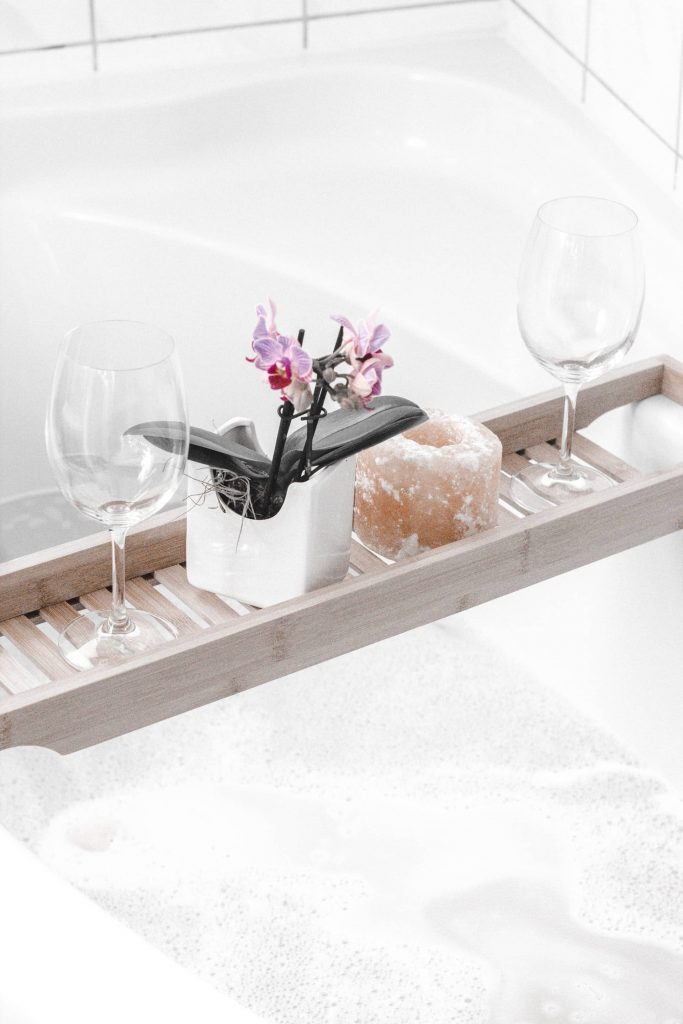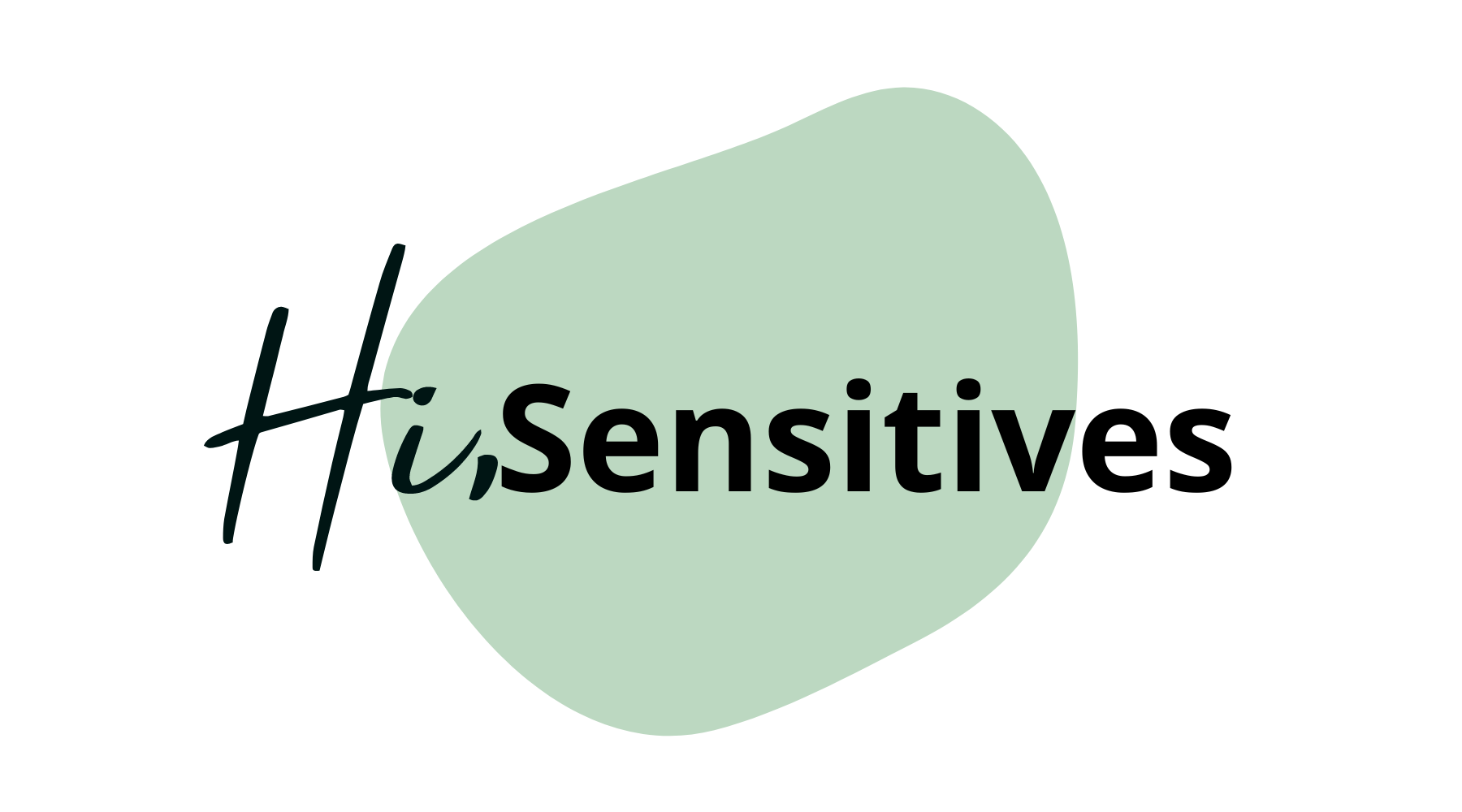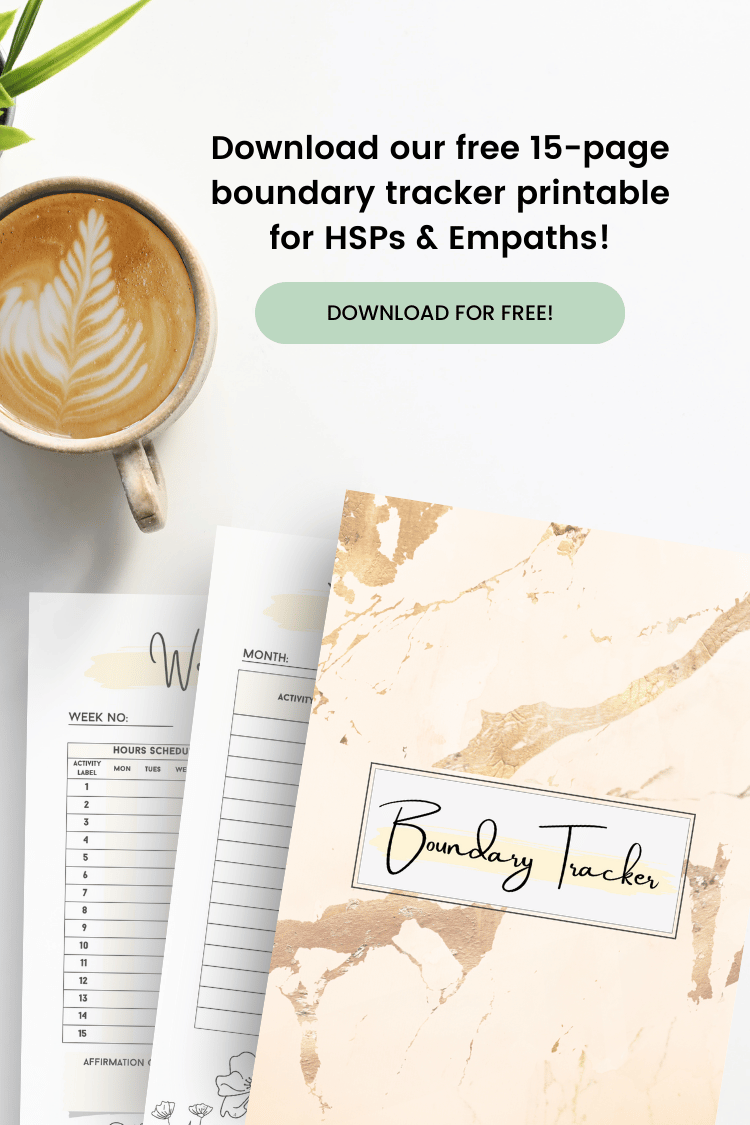Are you overstimulated? Learn why a relaxing bath is a perfect way to soothe, comfort, and restore the senses for a Highly Sensitive Person.
Hey there, lovely readers! We want to be completely transparent with you. Some of the links in this blog are affiliate links, which means if you click on them and make a purchase, we may earn a small commission at no additional cost to you. 😊
We only recommend products and services we genuinely believe in and have personally used or researched. Your support through these links helps us keep bringing you valuable content, so thank you for being amazing!
Estimated reading time: 123 minutes
Highly sensitive people understand the value of having a peaceful and safe place to retreat to. After a long day of tension, it’s critical to develop a tranquil habit.
Taking a bath is as much about self-care and relaxation as it is about getting clean! You want to get the most out of your bathing experience as possible. This article explains how to create the most relaxing bath ritual as a highly sensitive person. It also highlights the mental and physical benefits of including this activity in your routine.
Here’s What You’ll Learn:
- The Ways Taking a Bath Promotes Restorative Relaxation For the Highly Sensitive Person
- Why Taking a Relaxing Bath is Beneficial for the Highly Sensitive Person
- How to Set Up the Perfect Relaxing Bath Environment for the Highly Sensitive Person
- How To Enhance Your Bath for Maximum Relaxation As A Highly Sensitive Person
- Finished Your Relaxing Bath? Try These Best After Bath Practices For The Highly Sensitive Person
- Now You Are Ready for Your Highly Sensitive Relaxing Bath!
The Ways Taking a Bath Promotes Restorative Relaxation For the Highly Sensitive Person
Taking a relaxing bath provides countless health benefits for a highly sensitive person. Below, I listed some of the main advantages of bath time:
Reduces Stress
When it comes to Self-Care and Stress Relief, baths are usually near the top of the list. But I’d like to go over this process in greater depth.
For starters, a bath can improve your mood just as much as physical activity. Bathing can activate your parasympathetic nervous system, which is the part of your body responsible for relaxing, according to studies.
As your nervous system adjusts to the warming influence of the environment around you, you will notice a reduction in stress levels. A bath might literally compel your body to adjust how it handles worry if you’re feeling anxious. Because the nervous system of the Highly Sensitive Person is particularly reactive, the soothing warmth has a nice relaxing effect.
Second, bathing, like exercise, releases endorphins, or what I call “positive peps.” Exercising and taking a relaxing bath as a highly sensitive person both give you a pep in your step. Dr. Bobby Buka, a dermatologist, explains that “your skin releases endorphins in response to the soothing warm water in the same way that endorphins are released when you feel the sun on your skin.” “Submerging ourselves in hot water can be both therapeutic and reinvigorating because blood flow to the skin increases,” he explains.
Finally, warm baths were linked to lower levels of stress hormones such as cortisol. Cortisol interacts with neurotransmitters, which are chemical messengers that carry signals from the brain to the rest of the body. Neurotransmitters are important in mood regulation.
Warm water immersion, on the other hand, can raise levels of serotonin, a chemical produced by the brain that is associated with happiness and well-being. This may appear to be a lot of brain talk, but it all points to one thing: bathing improves your mood and happiness!

Relieves Aches and Pains
Because our bodies are 70% water, moist heat can penetrate deeper into muscles and tissues, allowing them to relax. Soaking in a warm bath a few times per week can also help with muscle soreness and tension, making it easier to exercise on a daily basis.
If you are hesitant to engage in strenuous exercise, stretching and moving in water has been shown to have a low impact on the joints, muscles, and bones while still providing an adequate workout. Pain and inflammation can be reduced by immersing in warm water for a short period of time. Relaxing baths, like using a heating pad, can also help relieve the pains of menstrual cramps.
You may also enjoy reading: How To Synch Your Life With Your Menstrual Cycle
Improves Circulation
A warm bath not only improves blood flow but also improves oxygenation by allowing you to breathe deeper and slower, especially when taking in steam. (Hello, at-home facial!)
Baths, when taken on a regular basis, may also help prevent heart attacks and strokes, according to several studies. “The high temperatures in a warm tub or sauna cause your blood vessels to dilate, which lowers blood pressure,” says Dr. Adolph Hutter, a Harvard Medical School professor of medicine.
“The volume of blood your heart pumps will also increase, particularly in a hot tub.” “This is due to the pressure of the water on the body, which increases the workload of the heart,” he explains.
Helps Strengthen Immunity
Bathing can kill bacteria and boost immunity. It can also help to alleviate the symptoms of a cold or flu. While a bath will not cure an illness, it may be soothing and calming to the body while you are fighting it.
A relaxing bath may also help the highly sensitive person to temporarily relieve symptoms such as congestion, aches, or fever, thereby assisting the healing process.
Moisturizes
Bathing cleans and hydrates your skin, hair, and eyes. Taking a bath (and also the steam) exposes you to fluid, which is a great way to stay hydrated.
We are always encouraged to drink plenty of water because the human body is mostly made of it. However, soaking in water is also extremely beneficial. Bonus points if you drink water while you take your relaxing bath!
Why Taking a Relaxing Bath is Beneficial for the Highly Sensitive Person
After discovering these benefits, you may wonder why taking a relaxing bath is particularly valuable for a highly sensitive person. Below, I listed some of the main advantages:
High Body Awareness
The Highly Sensitive Person is naturally motivated to pay close attention to practicing self-care. It’s a positive impact of the trait because if they don’t, they’ll suffer the consequences of neglect quite severely.
Because the highly sensitive person has an innate ability to be affected by relaxing stimulation, taking care of yourself with a relaxing bath will benefit us even more than our Non-HSP counterparts.
Serenity
A bath’s tranquil atmosphere is ideal for meditation, thought processing, and escape from the overstimulating hustle and bustle. Meditation has numerous advantages, particularly for the Highly Sensitive Person. More information can be found in this blog post. A guided body scan is another way for HSPs to connect with their inner selves. However, any method you choose to achieve mental serenity will be wonderful.
How to Set Up the Perfect Relaxing Bath Environment for the Highly Sensitive Person
Now that you are well aware of the many benefits of taking a relaxing bath as a highly sensitive person, here are some ways to get the most out of your bath time:
Colors and Items Promoting Calmness
Using spa-like paint colors is one of the simplest ways to create a peaceful bathroom. By using soothing paint colors on your bathroom walls, you will create a space that you will enjoy using.
Cool and tranquil colors such as grays and neutrals are excellent choices for a relaxing bathroom. Keep it light with blues or greens, or warm it up with richer hues like a deep taupe. Whether you choose blue, green, or white, the softer tones will undoubtedly promote calmness and relaxation, both of which are important considerations when choosing the best paint colors for your space.
In order to truly enjoy a relaxing bath, the highly sensitive person needs to feel comfortable in their environment. Part of that includes bringing natural, comforting colors into your home.
If you are renting a space and are unable to paint the walls, go with harmonious decor! Use the colors described above to make a shower curtain, towels, or mats. Decorate with smooth materials or items that bring back memories of your happy place. Given that you’ll be using this space to unwind, a fluffy mat, water feature, happy photo, or fun shower curtain are all excellent choices.
Remove Clutter
It can be distracting to have too many items crammed around you or in your space. Especially for the highly sensitive person, it is important to remove clutter in order to have a relaxing bath time.
According to a Princeton Neuroscience Institute study, having a lot of visual stimuli present while trying to concentrate results in those items competing for your attention. Simply put, if there is too much going on in your line of sight, you will have to concentrate harder to complete a task. And who wants to concentrate on unwinding?! Not for me!
Maintain a Clean Space
Just because your tub appears to be clean does not mean it is. If you enjoy taking regular baths (which hopefully you will after reading this article), it is recommended that you clean your tub once a week to avoid bacteria buildup and mildew. Or the distraction of unclean things… looking at you, hair in the drain. Gross! Check out these time-saving cleaning hacks for a gleaming tub. An easier process works for the majority of people who aren’t thrilled with the aspect of cleaning- after you shower or bathe, use a cleaning spray and give your tub a quick rinse. Voila!
Apply the Right Lighting
HSPs are extremely sensitive to light. Fluorescent lighting in the workplace, as well as blue light from computer and phone screens, aggravates the situation. While taking a relaxing bath, close the blinds or dim the lights to please your needs as a highly sensitive person. Any way to make those precious retinas go “ahhh.”
Candles are a popular way to achieve a soothing light effect. Helpful Hint! Beeswax candles burn longer, smell like honey, and purify the air. Just be careful where you place the candles; no one wants their bath to be interrupted by a falling flame!
Inviting Aromas
Speaking of candles, what a great way to invite alluring aromas into your relaxation space! HSPs prefer scents that can relax the central nervous system, reducing stress and anxiety.
Popular essences include Lavender, Jasmine, Vanilla, Peppermint, and Ylang Ylang, among many others. You could also use a diffuser, room spray, plug-in, or potpourri instead of candles.

Room Temperature
The temperature of the room should be chosen based on the specific feelings of each Highly Sensitive Person. You want it to be “not too hot, not too cold, but just right,” like Goldilocks and her porridge. Before you get in, find the sweet spot temperature and set the thermostat.
Tranquil Music

Playing music during your bath is a lovely addition to creating a relaxing bath environment for the Highly Sensitive Person.
According to research, “listening to music appears to be able to change brain functioning to the same extent as medication… dominant brainwave activity frequencies associated with conscious states such as concentration, anxiety, and sleep… Slow beats promote the slow brainwaves associated with hypnotic or meditative states.”
So, basically, you want the experience that Phoebe from FRIENDS describes: “(in a soothing voice) Relax every muscle in your body. Listen to the plinky-plunky music. Okay, now close your eyes, and think of a happy place.“
There are a variety of fun waterproof speakers that can be used in the tub area these days. To play soothing playlists, simply connect your Google Home or Alexa. One I have created specifically for bath time can be found here.
Beverage of Choice
Adding your favorite drink to a bath can make it even more enjoyable and relaxing!
With the addition of a bath tray, glass holder, or side shelf to place your beverage on, you can sip splendidly on a Spritzer, Lemonade, Sparkling Water, or a nice glass of wine in style. (Of course, a water bottle should be nearby to keep you hydrated.)
Eliminate External Stimuli (As Best You Can!)
Close the bathroom door and say “no” to constant interruptions for maximum relaxation for the Highly Sensitive Person.
Now, I say “as best you can,” because we all know that there are distractions beyond our control, such as loud neighbors, street noise, a partner watching TV, or children who require attention.
However, in order to make the most of this sacred time to unwind those overstimulated nerves, eliminate any and all potential distractions.
One of the best ways to eliminate external stimuli is to turn off your phone while bathing. The goal of a relaxing bath for a Highly Sensitive Person is to eliminate distractions and overstimulation while focusing on wellness and replenishing your overall well-being.
This is not the time for your phone’s ring-ring alerts, the overwhelming effects of social media scrolling, the never-ending work email notifications, or the harmful blue light emitted by the screen. Instead, read an uplifting book, concentrate on your meditation, or simply sit and listen to soothing music… we want to be in a happy place.
Detoxification
Bathing is an excellent way to start the detoxification process and help the body’s lymph drainage system. We all know how important lymphatic system care is for high sensitives! Those illnesses must be fought.
Dry brushing beforehand for additional exfoliation, for example, is a tip for assisting with this process. Brush your lymphatic areas with long, vigorous strokes using a brush with firm bristles. Begin with your feet and progress to your legs, stomach, arms, and underarms. Here’s a fun video that shows how to Dry Brush the upper areas as well:
How To Enhance Your Bath for Maximum Relaxation As A Highly Sensitive Person
Is your environment set and ready? Here are some ways the highly sensitive person can create the ultimate relaxing bath time:
Ideal Water Temperature
You want the bathwater to be between 90 and 105 degrees Fahrenheit (32-40 degrees Celsius), but a thermometer isn’t necessary; simply hold your wrist in the water with your fist facing upwards. You’re in the right temperature range if it feels comfortable to you. Although scalding hot is ideal for some, too much heat removes your skin’s natural oils, leaving you dry and itchy.
Furthermore, some people may experience dizziness or weakness when taking a bath that is too hot. Stick to warm water to protect your skin. This is especially important if you are a Highly Sensitive individual with a skin condition such as eczema or psoriasis.
Oils, Bubbles, and Salts, Oh My!
SO. MANY. EXCITING. ADDITIONS. Yippee! Let us begin with essential oils. Adding essential oils to your bath may be the perfect addition to a relaxing bath ritual for a highly sensitive person. Here are some pointers on how to enjoy them properly:

Salts are another way to add relaxation to your bath. Epsom Salts aren’t actually salt, but rather a combination of essential minerals. They contain primarily magnesium, an essential electrolyte that aids in muscle, nerve, and heart function.
According to research, Epsom Salts can help relax muscles and relieve pain. To reap the benefits, simply soak 300 grams (1+1/4 cup) in a tub of warm water for at least 15 minutes.
Who says bubble baths are only for kids? A layer of bath bubbles, in addition to being more FUN, acts as an insulator, keeping the bath water warmer for longer. Also, it’s difficult to not exhale a huge, gratifying sigh while immersed in a bubble bath… relaxation at its finest.
Head Rests
There’s no better way to pamper yourself than with a plush, luxurious bath pillow. Bath pillows come in a variety of shapes and sizes, but their purpose remains the same: to cradle your head, neck, and back against the uncomfortable ledge of your bathtub.
If you really want to spoil yourself, there are full-body bath pillows available. Another tried-and-true method is to place a rolled-up towel behind the neck. Anything works if it makes you feel more at ease.
Length of Bath Time
As tempting as it is to stay in your relaxing bath for an extended period of time, the ideal time for taking a bath is 20-30 minutes. Allow the effects to sink in, especially if you added extra goodies to your bath, but don’t stay in the water for too long or you’ll become prune-like.
If that is a bummer for you, I have included best practices for after you get out of the bath to keep the relaxing mood going!

Finished Your Relaxing Bath? Try These Best After Bath Practices For The Highly Sensitive Person
Here are some ways to take the relaxation out of your bathtub with you into your daily life:
Keep Treating Yourself
To begin with, you don’t want to ruin your superb relaxing time by getting out of the tub and frantically searching for your towel!
You should place it in an easily accessible location ahead of time. It also isn’t ideal to not thoroughly dry off, resulting in wet hair drips and chills.
A Highly Sensitive Person would benefit from investing in that fluffy big towel if they are prone to preferring certain textures. Purchase one that feels luxurious against your skin rather than scratchy or rough.
Continue your post-bath ritual in an equally plush robe, and you’ll feel like you’re at the spa.
Lock In That Moisture
“Applying moisturizer after a bath is absolutely critical because it provides an artificial barrier that can help prevent water loss and also keep out agents bacteria, viruses, and irritants that we don’t want to get into the skin,” says the American Academy of Dermatology.
“After taking a bath, apply moisturizer as soon as possible. Before applying the moisturizer, we like to gently pat the skin but leave it damp so that we don’t completely remove the moisture we receive from the water.” Lotion up quickly before all of that moisture evaporates, whether you prefer silky smooth hydrating lotion or thick body butter.
Stretching
A warm water bath will warm up your muscles and prepare them for stretching. Poses that stretch and open up your body on a regular basis can induce feelings of relaxation.
The physical benefits can also lead to a more relaxed state of mind. Doing this after a relaxing bath can help the highly sensitive person to unwind for bed now that your body is feeling better.
Bedtime
Something about the phrase “bedtime” makes a Highly Sensitive Person smile.
A growing body of research suggests that taking a warm bath before going to bed can help you sleep better. A person’s core body temperature naturally cools in the hours before bedtime, while the skin temperatures of the hands and feet rise.
Scientists hypothesize that immersing your body in warm water aids this natural temperature regulation process, resulting in better sleep. A warm bath also helps to strengthen and adjust the circadian rhythms, which affect every organ, including the brain and nervous system, by increasing core body temperature. What a relief for HSPs!
To read other helpful tips on improving sleep quality, check this out.
Now You Are Ready for Your Highly Sensitive Relaxing Bath!
Now that you have read everything you need to know about creating a relaxing bath as a highly sensitive person, it is time to put theory into practice. Head over to your bathroom, set the vibe, and dive in!
What is your favorite bath ritual?
Disclaimer*** All information in this article is my own opinion, and not to be taken as medical advice. Reliance on any information provided in this article is solely at your own risk. Please refer to your medical practitioner before making any medical decisions.









